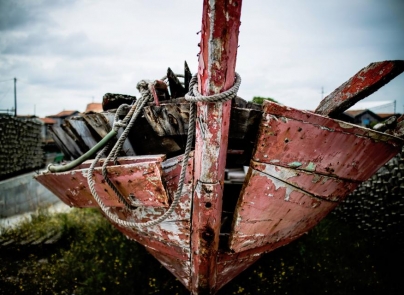Rosa Young – Committed to Serve

Rosa Young – Committed to Serve
At the turn of the twentieth century, many civil rights advocates fought to create better communities and lives for Black Americans. They did it mostly through politics, essays, and discussions. Rosa Young – a name still largely unknown– did it through education, the gospel, and prayer.
A Bright Child
Rosa Young was born on May 14, 1890 in Rosebud, a small rural community in Wilcox County, Alabama, one of the poorest in the nation. She was the fourth of ten children. Her father, Grant Young, was an Episcopal minister. From an early age, she had a great desire to learn. Her first teacher was her uncle Mitchell, who had studied at Tuskegee Institute and was holding evening classes for a few children, since public schools for Black children were still lacking. When Rosa finally managed to go to a public school, she was placed in the fifth grade.
For a long time, her only book was the Bible. But her family didn’t take her to church until she was ten, and took her sparingly after that, probably because of her emotional and rather confused reaction. Impressed by people who claimed they had visions and heard voices, she was waiting for these supernatural signs, until her grandmother reassured her, and encouraged her to go back to church and Sunday School regularly.
Rosa studied and worked in the cotton fields at the same time. By the time she ended sixth grade (the highest grade offered at the school), she had raised enough money to pay for books, clothes, and train fare to Payne University, a Methodist Episcopal School in Selma, Alabama, 54 miles away from home. Aware of her talents, her parents arranged for her to attend the school and found her accommodations through a friend.
A Leading Student
Being the only student from the country, she was initially mocked by city students, and spent the first months crying. But she eventually made friends. For two years, she left school early in summer and returned late in order to work in the cotton fields and raise funds for her tuition. Later, she spent her summers tutoring other students. In spite of this workload, during her six years at the school she won several scholastic awards and became editor of the school newspaper.
Chosen as valedictorian of her graduating class of 1909, she exhorted her fellow students to leave the university “in the spirit of service, with a determination to do all in our power to uplift humanity.”[1]
“People are looking to us for strength and help. They need our best efforts, our bravest words, our noblest deeds, our tenderest love, and our most helpful sympathy. This is a needy world; outstretched hands may be seen by the thousands asking for aid. It is our duty to relieve human wants. Let us place our standard high, but be willing to do the lowest task, the most distasteful labor, be ever helpful and generous, and be ready to lend a helping hand. … There is nothing more reputable to a race or nation than Christian service. So let us not hesitate, but grasp every opportunity that will enable us to do some good for others. As teachers, teach the people; as merchants, supply their needs; as doctors, administer to their wants; and as preachers, proclaim the Gospel of our Lord Jesus Christ.”[2]
Teacher and Fundraiser
These were not empty words. After receiving her teaching credentials, Young went on to teach from school to school (due to a state law, schools could only stay open if they had enough teachers). This experience motivated her to establish a private school in her own hometown, and began a fundraising campaign.
In her autobiography, she lists several reasons for her decision. In the Black communities she visited, she had seen much ignorance and superstition, a disregard for common morals, and poor living conditions. “The children, the dear little children of the rural districts, whom I love so well and in whom I am so interested, were in a sad condition. They were pitiful sights. Some of them had to come to school partly dressed in adults’ clothing. In the dead of winter some of them would have to come to my school with only one or two pieces of clothing on.” They were dirty, and their hair, matted and infested with lice, had never been combed. “The best they knew to do was to steal, lie, curse, swear, and fight like cats and dogs.”[3]
In order to raise these people out of these conditions, she believed education was essential. But schools were scarce and teachers were unprepared. Not even the local churches could provide any respite, because many preachers were just as “ignorant and immoral” as their parishioners. “The better class of laymen could not trust them in their homes during their absence.”[4]
Determined to change things, Young started a fund-raising campaign until, in October 1912, she was able to open the Rosebud Literary and Industrial School with 115 students. The next year, she had 100 more.
Weelvils and the Lutheran Church
Her efforts almost crumbled in 1914, when the Mexican boll weevil, a destructive pest of cotton, reached Wilcox County, destroying the cotton crop that was keeping the residents alive. Young wrote Booker T. Washington at the Tuskegee Institute for help. She received a letter from his secretary, saying that he was not able to offer financial support, but the Lutherans, who had been working with Black missions in the South, might.
In response to Young’s request, the Synodical Conference Mission Board of the Missouri Synod sent a missionary pastor, the Norwegian Nils J. Bakke, to Rosebud to survey the situation. Impressed by the work Young had done, Bakke recommended her to the board, who assigned him to serve as superintendent of the school.
This opened the door for a Lutheran church to be planted in Rosebud – the first in what was known as “the Black Belt.” Young was impressed by Bakke’s knowledge of Scriptures, his love for the people, and his insistence on the pure message of the gospel. She was the first in her community to join the Lutheran church, and many more followed.
Later, Young and Baake founded more schools in other areas of Wilcox County. After 1920, when Baake left Alabama health reasons, Young continued to serve as a teacher, missionary, lecturer, and fundraiser. She often traveled from village to village, promoting both the gospel and proper education.
Sacrifices and Slander
She did this at great personal sacrifice, using her own funds, and jeopardizing her already frail health (she had been suffering from rheumatism from a very young age). She often slept in cold rooms, with hardly any food because the people who hosted her were too poor. “At times I would become so hungry that I would go out into the pastures and eat blackberries, plums, and dewberries,” she said. But she could only do this in the summer. “During the winter months I would have nowhere to go to seek food.”[5]
She also had to endure the anger of Methodists who resented the fact that she was taking people away from their churches and into the Lutheran church. From pulpits, preachers called her a devil, Jezebel, an antichrist, a false prophet, a democrat, working for the white people, an old white-man woman, unfit to lead and teach. They told the people that the Lutheran Church was going to put them all back into slavery. “All this slander hurt my feelings and sank into my heart like so many arrows,”[6] she said.
Legacy
In spite of this, Young’s work continued and her schools went on to train many leaders who improved life in their communities. In 1961, the Lutheran Church-Missouri Synod honored her with an honorary doctorate (L.L.D.) from Concordia Theological Seminary. She died on June 30, 1971, and was buried, according to her wishes, near Christ Lutheran Church in Rosebud. In 2015, The Lutheran Church Missouri Synod (LCMS) made a documentary on her life, entitled The First Rosa[7] (a reference to the fact that she came before Rosa Park).
Some of her students are still alive and hold beautiful memories of her and her encouragement.
She closed her autobiography with a disclaimer: “Please do not get the idea that I am trying to make myself out a saint here on earth without sins. Not so. I am a poor sinner; My sons are many. I have sinned much in thought, word, and deed, and therefore give all glory and praise for this little volume to Jesus, for it belongs to Him and not to me.”[8]
[1] Rosa Young, Light in the Dark Belt, St. Louis, MO: Concordia Publishing House, 1929, 34
[2] Ibid., 35-36
[3] Ibid., 50
[4] Ibid., 53
[5] Ibid., 120
[6] Ibid., 118, 119
[8] Young, Light in the Dark Belt, 149.





